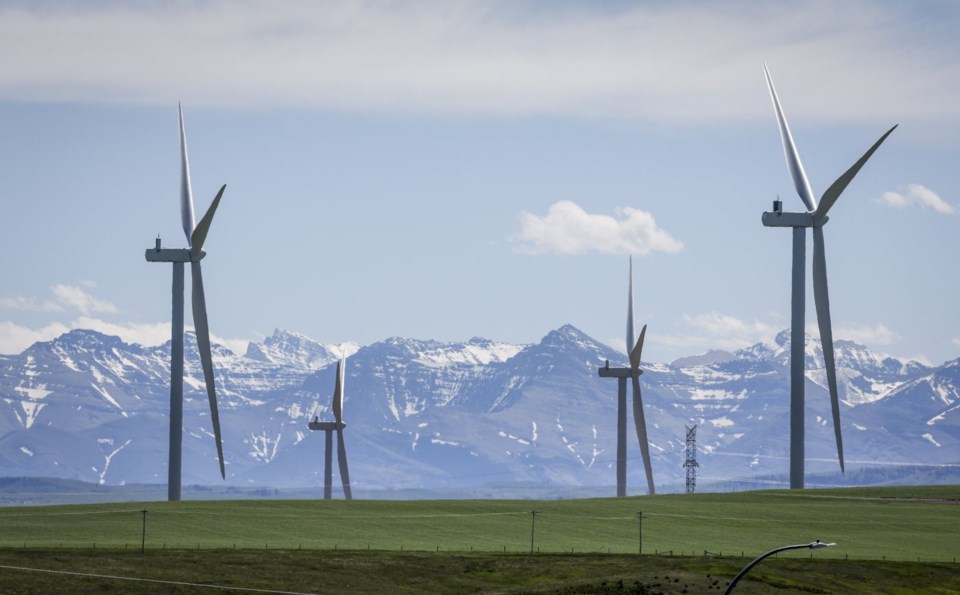CALGARY — The coming boom in artificial intelligence represents both a threat and an opportunity for the clean energy transition, market experts suggest.
No longer purely in the realm of the tech sector, AI has in recent years become an energy industry issue. The expected rapid rollout of the energy-hungry data centres needed to power the AI revolution has captured the attention of everyone from natural gas drillers to electricity grid operators to renewable energy developers.
"AI is very, very energy-hungry. Anything you do with AI consumes a lot of power," said Ed Crooks, vice-chair for the Americas with international data and analytics firm Wood Mackenzie, at the Energy Disruptors: Unite conference in Calgary on Wednesday.
“If you’re talking about creating an image with AI ... that uses about 10,000 times the power as a simple Google search.”
According to the International Energy Agency, the world's data centres consumed roughly 1.4 to 1.7 per cent of global electricity use in 2022. But the IEA projects data centre energy consumption will double by the end of 2026 as AI workloads become more operationally complex.
In the U.S., data centre capacity is expected to double within the next five years, said Crooks. He added Wood Mackenzie foresees North American electricity demand increasing by 50 per cent by 2050, in part due to the rapid rollout of data centres but also because of electric vehicle demand, the electrification of home heating and other trends.
In Canada — where there are already an estimated 239 data centres operating coast-to-coast, according to figures released Wednesday by the Canada Energy Regulator — utilities are already incorporating expected AI-related demand growth into their forecasting.
Hydro Quebec, for example, anticipates an increase of 4.1 terawatt-hours in electricity demand from data centres between 2023 and 2032. (For comparison, that's about two per cent of the total amount of electricity produced in the entire province of Quebec in 2022).
Crooks says for the globe, the fastest and cheapest way to meet AI's growing needs for reliable, on-demand electricity is to build new natural gas-fired power plants.
But he said that is extremely problematic given countries need to wean themselves off of natural gas usage in order to meet global climate targets.
“If in 2050, we are using more natural gas than we’re using now, and if actually demand is still rising, then that has very, very serious implications for the climate," Crooks said.
Many of Canada's natural gas drillers are already expressing optimism about what data centre growth could mean for the future of their industry, which is currently challenged by extremely low commodity prices.
Natural gas pipeline companies such as Enbridge Inc. and TC Energy Corp. are also eyeing data centre electricity demand as a potential opportunity for revenue growth.
But Crooks said Big Tech is well aware of their industry's growing electricity needs, and is increasingly choosing to invest directly in its own power infrastructure.
He pointed out Amazon, Meta and Google are already among the biggest corporate buyers of wind and solar energy, and have played a key role in the growth of the renewable energy industry.
In addition, Google is backing an innovative geothermal project in Nevada to power some of its data centres with clean electricity, and Microsoft recently signed a 20-year power purchase agreement to support the restart of a nuclear power unit at Three Mile Island in Pennsylvania.
“The fact that AI is consuming so much energy can accelerate the innovation of the technologies required to decarbonize," said Ana Domingues, who leads energy and resource AI efforts globally for professional services firm EY.
"That’s because we are talking about the companies that have deep pockets.”
Domingues said she is optimistic the growth of AI will prompt large companies to make investments in the clean energy technologies the world needs to meet its climate goals.
But she also warned that building these technologies takes time, and in the interim, AI is poised to place a great deal of pressure on electricity grids around the globe.
"You already have countries — the Netherlands, Germany, the U.K. — that are facing real congestion problems (on their grids)," Domingues said in an interview on the sidelines of the Calgary energy conference on Wednesday.
"You will start having more blackouts from severe weather events and from congestion on the grid — that is, the inability to handle so many things plugged into the grid."
This report by The Canadian Press was first published Oct. 2, 2024.
Amanda Stephenson, The Canadian Press



